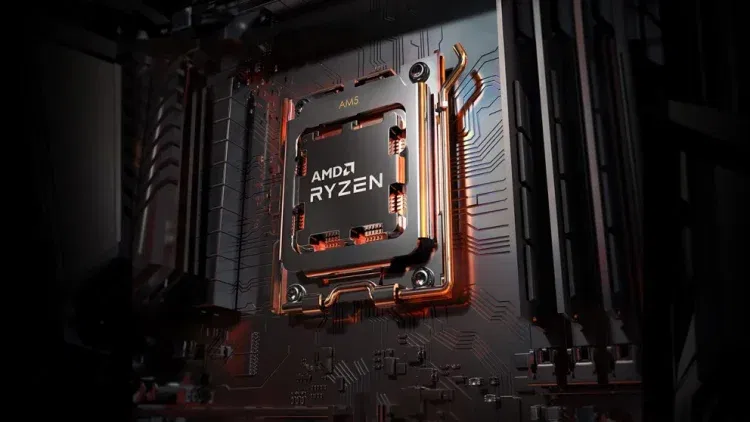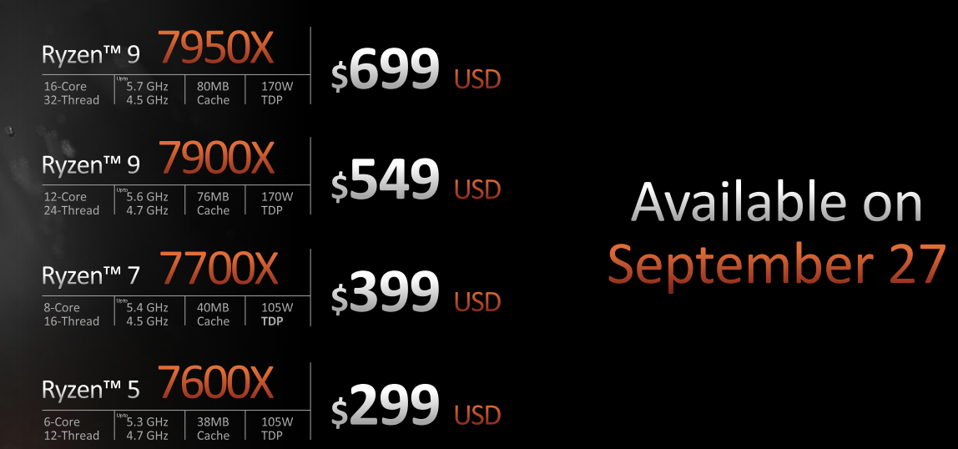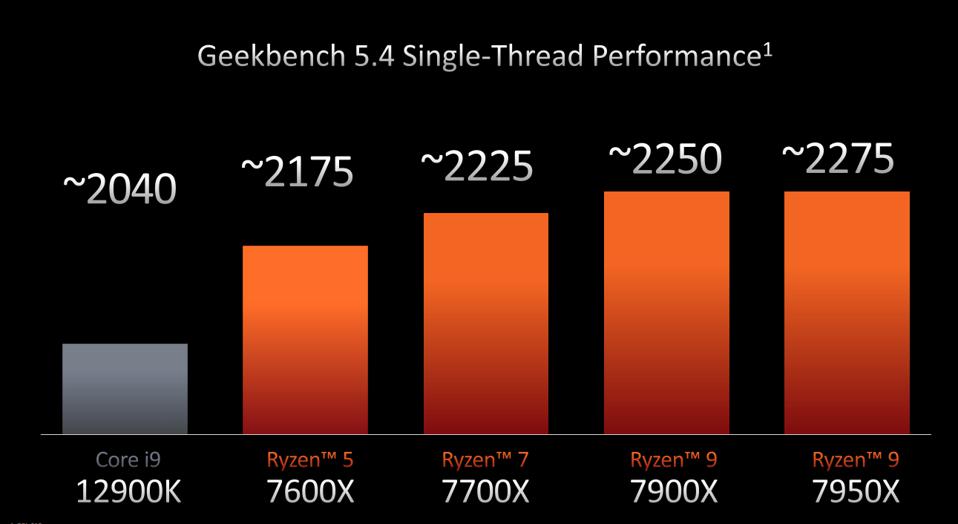Today, AMD hosted its Zen 4 Livestream and revealed four new Ryzen 7000 series processors based on this new architecture. These new CPUs are slated to be released on September 27, 2022.
- Ryzen 5 7600x – 6 Core/12 Thread, up to 5.3 GHz, 38MB Cache – $699
- Ryzen 7 7700x – 8 Core/16 Thread, up to 5.4 GHz, 40MB Cache – $399
- Ryzen 9 7900x – 12 Core/24 Thread, up to 5.6 GHz, 76MB Cache – $549
- Ryzen 9 7950x – 16 Core/32 Thread, up to 5.7 GHz, 80MB Cache – $699
As you can see, the price points are very attractive, especially when looking to upgrade from AMD’s ZEN 3, or possibly from Intel’s 11th or 12th generation of processors. However, Zen 3’s TDP (Thermal Design Power) is also quite higher than what we’re used to. Thankfully, AMD has stated that current CPU coolers will work with Zen 3 when it is released.
Of course, AMD also showed some slides showing Zen 4’s power. The single-thread performance caught my eye, as AMD is stating that even the Zen 4 Ryzen 5 7600x beats Intel’s 12th-gen i9 12900k. For a fraction of the cost! Of course, we need to see actual benchmarks, and I wouldn’t put much into those slides. Please show us some actual performance, AMD!
Zen 3 will also introduce a new socket, AM5. AMD has stated for a while now that it wanted to move away from its current AM4 socket with AM5, which will come with a 1718-pin LGA socket. Yes, that means no more bend CPU pins during installation or if you happen to drop your processors.
Perhaps the biggest announcement with Zen 4 is PCIe 5.0. Now you’re probably saying, “didn’t we just get PCIe 4?” Well, we did, but now we’re getting PCIe 5.0, which will provide more headroom for GPUs and storage, that can take advantage of the bandwidth.
Today, AMD also revealed a new motherboard, the B670E, which will be more in line with the more expensive motherboards and will offer both PCIe 5.0 storage and graphics support, whereas the B670 only offers PCIe 5.0 storage support. In terms of motherboards, we’ll see budget-friendly motherboards from the B670, which will only offer the bare minimum. And more expensive versions from the X670E and X670.
AMD has also stated that Zen 4 will be strictly DDR5 and, unlike Intel, will not have any hybrid motherboards. AMD will have over 15 DDR5 memory kits available at launch, with AMD Expo, which is their version of XMP. XMP was always Intel’s memory profiling technology; it had to depend on it ever since Ryzen was released. With AMD Expo, that will be a thing of the past. According to AMD, AMD Expo will introduce one-click memory optimization, which sounds interesting. It should also remove a lot of issues that Ryzen owners have had to deal with when using XMP memory profiles. DDR5 memory is already costly, and with a new CPU line launching this Fall 2022, I don’t expect it to get any cheaper. Keep that in mind when pricing out a new Zen 4 build.
Ok, that was a lot of technical stuff, but what can you take away from this all? As a consumer, AMD is saying that they have Intel beat and, with Ryzen 7000, will offer the best and fastest processors for gaming and content creators. Sure, it’s going to be expensive, as moving to a new motherboard + CPU combo always is. But now you also have to factor in DDR5, which isn’t getting any cheaper.
So there you go, everything you need to know about AMD’s Zen 4 processors from today’s event. Are you interested in any of these processors or new additions? Will it make you switch from what you already have? Let us know in the comments.
As for me, you know I’m a technology junkie, and I’m very interested in upgrading my Ryzen 9 Ryzen 5900x rig to the Ryzen 9 7900x and pitting it against my current Intel i9-12900k rig.






